On the Participation of Power-To-Heat Assets in Frequency Regulation Markets—A Danish Case Study
Abstract
:1. Introduction
2. Frequency Regulation Use Case
2.1. Smart Grid Aarchitecture Model Mapping
2.2. Market Overview
2.2.1. Electricity Markets
2.2.2. Heat Markets
2.3. Technical Requirements for Qualification and Provision of Services
2.3.1. Frequency Containment Reserve
2.3.2. Automatic and Manual Reserves
2.3.3. Overview of Requirements
2.4. P2H Opportunities and Barriers
3. System Overview
3.1. District Heating Network and Distribution Grid Topologies
3.2. Model Architecture and Requirements
3.3. Electrical Grid
3.3.1. Grid Frequency Model
3.3.2. Distribution Grid
3.4. Power-To-Heat Units
3.4.1. Electric Boiler
3.4.2. Heat Pump
3.4.3. Local Control
3.5. BRP Control
3.6. TSO Control
4. Considerations on Real-Time Implementation
4.1. Deployment Architecture
4.2. Model Discretization
5. Simulation Results
5.1. Assets’ Qualification
5.2. Response of P2H Units to a Large Frequency Excursion
6. Conclusions
Author Contributions
Funding
Conflicts of Interest
References
- Mazhar, A.R.; Liu, S.; Shukla, A. A state of art review on the district heating systems. Renew. Sustain. Energy Rev. 2018, 96, 420–439. [Google Scholar] [CrossRef]
- Persson, U.; Werner, S. Heat distribution and the future competitiveness of district heating. Appl. Energy 2011, 88, 568–576. [Google Scholar] [CrossRef]
- Energy Agreement of 29 June 2018. Agreement between the Government and Parties. Available online: https://en.efkm.dk/media/12307/energy-agreement-2018.pdf (accessed on 29 June 2018).
- Energinets Indkøb af Reserver i Elsystemet-Regulering, Markedets Funktionsmåde, Perspektiv og Konkurrence. Available online: https://forsyningstilsynet.dk/media/5443/2018_12_21_rapportfin.pdf (accessed on 19 December 2018).
- Ancillary Services to be Delivered in Denmark—Tender Conditions. Available online: https://en.energinet.dk/-/media/Energinet/El-RGD/Dokumenter/Ancillary-services-to-be-delivered-in-Denmark.pdf (accessed on 15 October 2019).
- Technical Conditions for Participating in Automatic Balancing in Denmark (FRR-A). Available online: https://en.energinet.dk/-/media/396E3C358B664EE4B6518BB59B38D0F5.pdf (accessed on 21 July 2016).
- Laura, M.; Christian, V.; Katharina, B.; Moritz, L.; Dirk, M. Economic assessment of air-to-water heat pumps in the German building stock considering heating system design and dynamic operation. In Proceedings of the ECOS 2019—The 32nd International Conference on Efficiency, Cost, Optimization, Simulation and Environmental Impact of Energy Systems, Wroclaw, Poland, 23–28 June 2019. [Google Scholar]
- Millar, M.A.; Burnside, N.M.; Yu, Z. District Heating Challenges for the UK. Energies 2019, 12, 310. [Google Scholar] [CrossRef] [Green Version]
- IEA. How Can District Heating Help Decarbonise the Heat Sector by 2024? Analysis from Renewables 2019, Article. Available online: https://www.iea.org/articles/how-can-district-heating-help-decarbonise-the-heat-sector-by-2024 (accessed on 21 October 2019).
- Bloessa, A.; Schillb, W.-P.; Zerrahnb, A. Power-to-heat for renewable energy integration: A review of technologies, modeling approaches, and flexibility potentials. Energy 2018, 212, 1611–1626. [Google Scholar] [CrossRef]
- Kontu, K.; Rinne, S.; Junnila, S. Introducing modern heat pumps to existing district heating systems–Global lessons from viable decarbonizing of district heating in Finland. Energy 2019, 166, 862–870. [Google Scholar] [CrossRef]
- Khatibi, M.; Bendtsen, J.D.; Stoustrup, J.; Tougaard, J. Local heating concepts for upgrading district heating networks, a real world case study. In Proceedings of the ECOS 2019—The 32nd International Conference on Efficiency, Cost, Optimization, Simulation and Environmental Impact of Energy Systems, Wroclaw, Poland, 23–28 June 2019. [Google Scholar]
- Helin, K.; Syri, S.; Zakeri, B. Improving district heat sustainability and competitiveness with heat pumps in the future Nordic energy system. Energy Procedia 2018, 149, 455–464. [Google Scholar] [CrossRef]
- David, A.; Mathiesen, B.V.; Averfalk, H.; Werner, S.; Lund, H. Heat roadmap Europe: Large-scale electric heat pumps in district heating systems. Energies 2017, 10, 578. [Google Scholar] [CrossRef] [Green Version]
- Kuprat, M.; Bendig, M.; Pfeiffer, K. Possible role of power-to-heat and power-to-gas as flexible loads in German medium voltage networks. Front. Energy 2017, 11, 135–145. [Google Scholar] [CrossRef]
- Meesenburg, W.; Kofler, R.; Ommen, T.; Markussen, W.B.; Elmegaard, B. Design considerations for dynamically operated large-scale ammonia heat pumps. In 25th IIR International Congress of Refrigeration (ICR 2019); International Institute of Refrigeration: Paris, France, 2019; pp. 2591–2598. [Google Scholar]
- Meesenburg, W.; Markussen, W.B.; Ommen, T.; Elmegaard, B. Optimizing control of two-stage ammonia heat pump for fast regulation of power uptake. Appl. Energy 2020, 271, 115126. [Google Scholar] [CrossRef]
- CEN-CENELEC-ETSI Smart Grid Coordination Group. Smart, Grid Reference Architecture. Available online: https://ec.europa.eu/energy/sites/ener/files/documents/xpert_group1_reference_architecture.pdf (accessed on 2 September 2020).
- Varmelast. Generation of Heat Plans. Available online: https://www.varmelast.dk/da/varmeplaner (accessed on 30 November 2019).
- Petersen, L.; Iov, F.; Shahid, K.; Olsen, R.L.; Altin, M.; Hansen, A.D. Voltage Control Support and Coordination between ReGen Plants in Distribution Systems, Deliverable D2 PSO ForskEl 12347 RePlan. Available online: https://www.replanproject.dk/Publications/Deliverable-reports (accessed on 30 November 2016).
- Petersen, L.; Iov, F. Distributed voltage control coordination between renewable generation plants in MV distribution grids. CIRED Open Access Proc. J. 2017, 1038–1042. [Google Scholar] [CrossRef] [Green Version]
- Adamczyk, A.G.; Altin, M.; Göksu, Ö.; Teodorescu, R.; Iov, F. Generic 12-Bus Test System for Wind Power Integration Studies. In Proceedings of the EPE Joint Wind Energy and T&D Chapters Seminar; EPE Association: Auderghem, Belgium, 2012. [Google Scholar]
- Adamczyk, A.G. Damping of Low Frequency Power System Oscillations with Wind Power Plants. Ph.D. Thesis, Aalborg University, Aalborg, Denmark, 2012. [Google Scholar]
- Altin, M. Dynamic Frequency Response of Wind Power Plants. Ph.D. Thesis, Aalborg University, Aalborg, Denmark, 2012. [Google Scholar]
- Anderson, P.M.; Fouad, A.A. Power System Control and Stability; IEEE Press: Piscataway Township, NJ, USA, 2003; ISBN 0-471-23862-7. [Google Scholar]
- Petersen, L.; Iov, F.; Tarnowski, G.C. Gevorgian, Koralewicz, Stroe: Validating Performance Models for Hybrid Power Plant Control Assessment. Energies 2019, 12, 4330. [Google Scholar] [CrossRef] [Green Version]
- Farooq, A.A.; Afram, A.; Schulz, N.; Janabi-Sharifi, F. Grey-box modeling of a low pressure electric boiler for domestic hot water system. Appl. Therm. Eng. 2015, 84, 257–267. [Google Scholar] [CrossRef]
- Verhelst, C.; Logist, F.; Van Impe, J.; Helsen, L. Study of the optimal control problem formulation for modulating air-to-water heat pumps connected to a residential floor heating system. Energy Build. 2012, 45, 43–53. [Google Scholar] [CrossRef]
- Tahersima, F.; Stoustrup, J.; Rasmussen, H.; Meybodi, S.A. December. Economic COP optimization of a heat pump with hierarchical model predictive control. In 2012 IEEE 51st IEEE Conference on Decision and Control (CDC); IEEE: Piscataway Township, NJ, USA, 2012; pp. 7583–7588. [Google Scholar]
- Reinholdt, L.; Kristófersson, J.; Zühlsdorf, B.; Elmegaard, B.; Jensen, J.; Ommen, T.; Jørgensen, P.H. Heat pump COP, part 1: Generalized method for screening of system integration potentials. In 13th IIR Gustav Lorentzen Conference on Natural Refrigerants (GL2018); International Institute of Refrigeration: Paris, France, 2018; pp. 1097–1104. [Google Scholar]
- Kemal, M.S.; Petersen, L.; Iov, F.; Olsen, R.L. A Real-Time Open Access Platform Towards Proof of Concept for Smart Grid Applications. J. Commun. Navig. Sens. Serv. 2017, 1, 49–74. [Google Scholar]
- Smart Energy Systems Laboratory at Aalborg University. Available online: www.et.aau.dk/laboratories/power-systems-laboratories/smart-energy-systems (accessed on 9 September 2018).
- Petersen, L.; Iov, F.; Tarnowski, G.C. A Model-Based Design Approach for Stability Assessment, Control Tuning and Verification in Off-Grid Hybrid Power Plants. Energies 2019, 13, 49. [Google Scholar] [CrossRef] [Green Version]
- Iov, F.; Petersen, L.; Shahid, K.; Olsen, R.L. Verification of Ancillary Services in Large Scale Power System. Deliverable D5 PSO ForskEl 12347 RePlan. Available online: https://www.replanproject.dk/Publications/Deliverable-reports (accessed on 7 February 2018).
- Petersen, L.; Iov, F. Practical Considerations regarding Implementation of Wind Power Applications into Real-Time Hardware-In-The-Loop Framework. In NEIS Conference 2016: Sustainable Energy Supply and Energy Storage Systems (Nachhaltige Energieversorgung und Integration von Speichern); Schulz, D., Ed.; Springer: Berlin/Heidelberg, Germany, 2017; pp. 61–66. [Google Scholar]
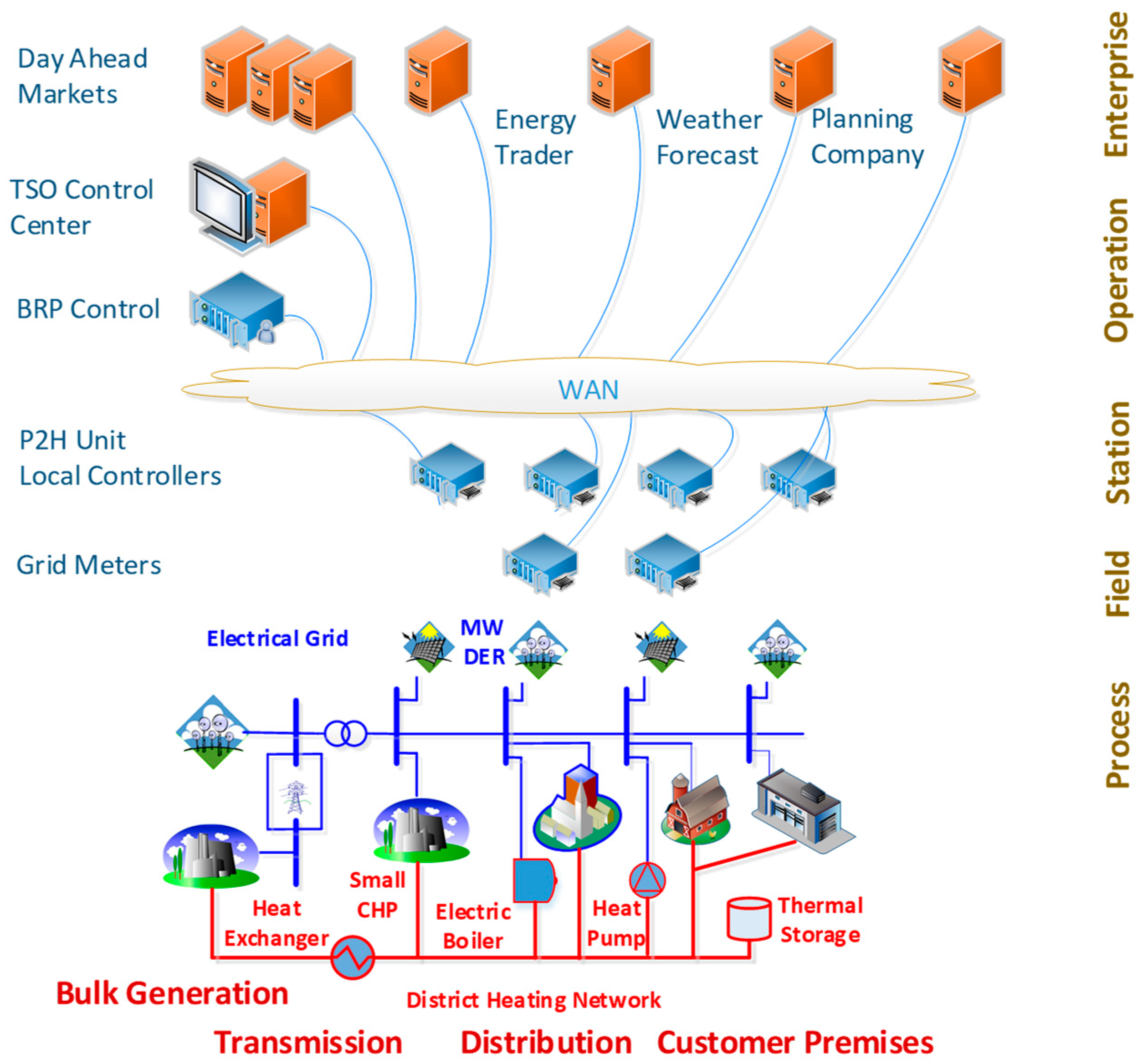




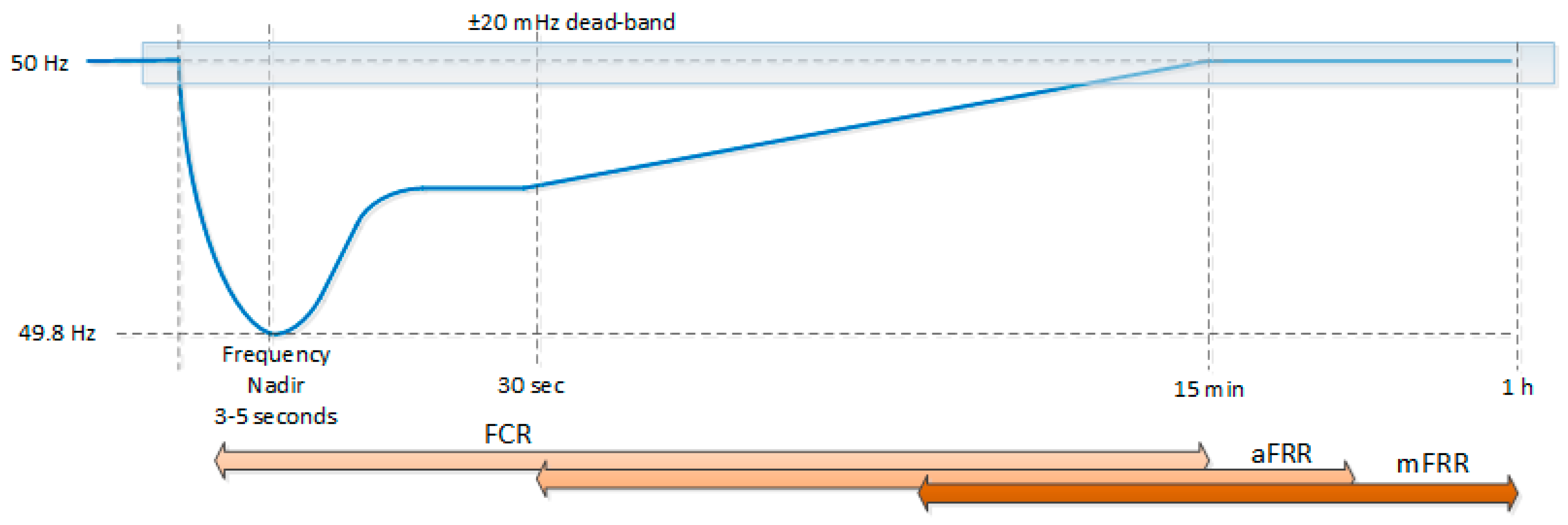
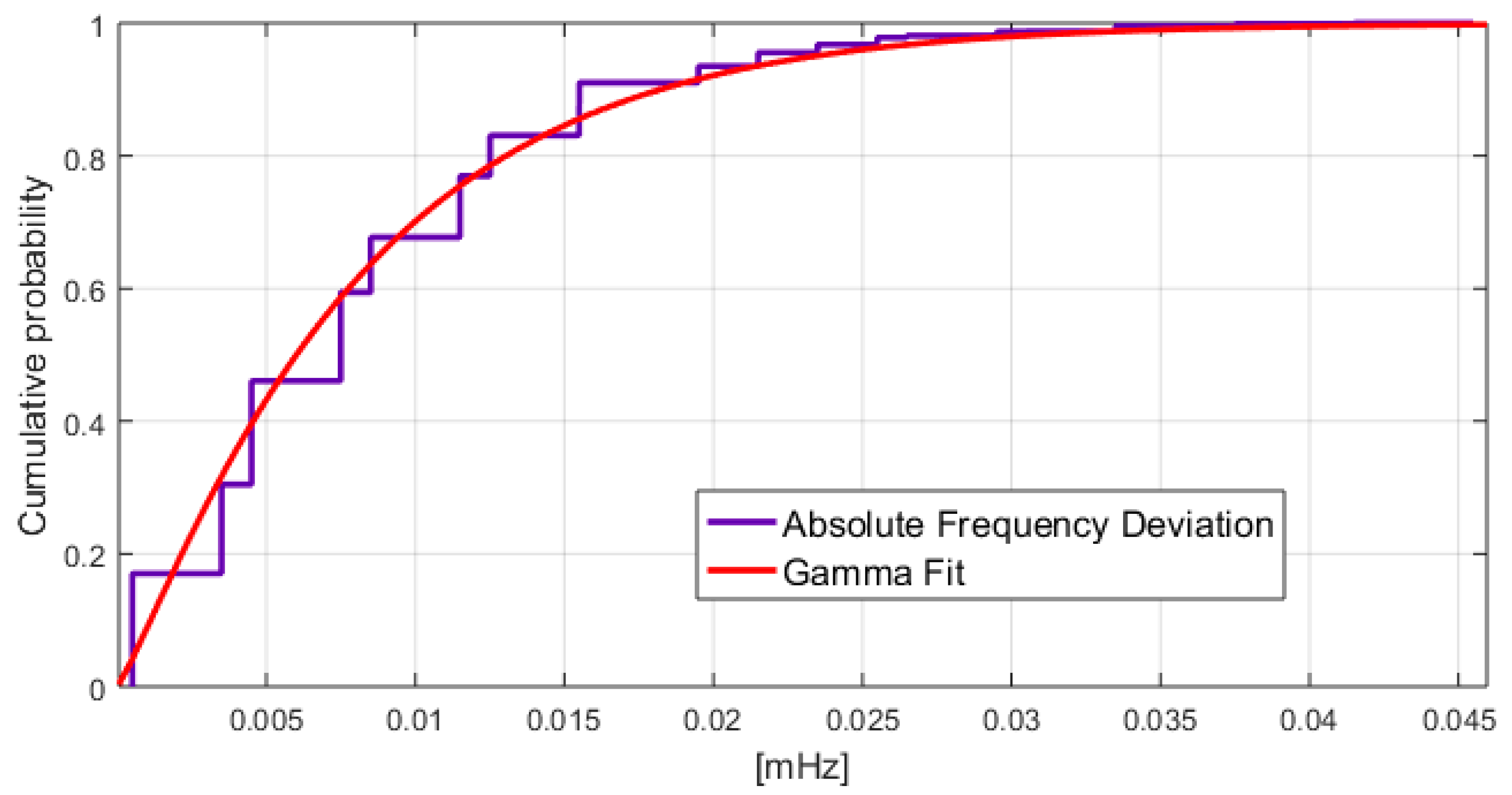

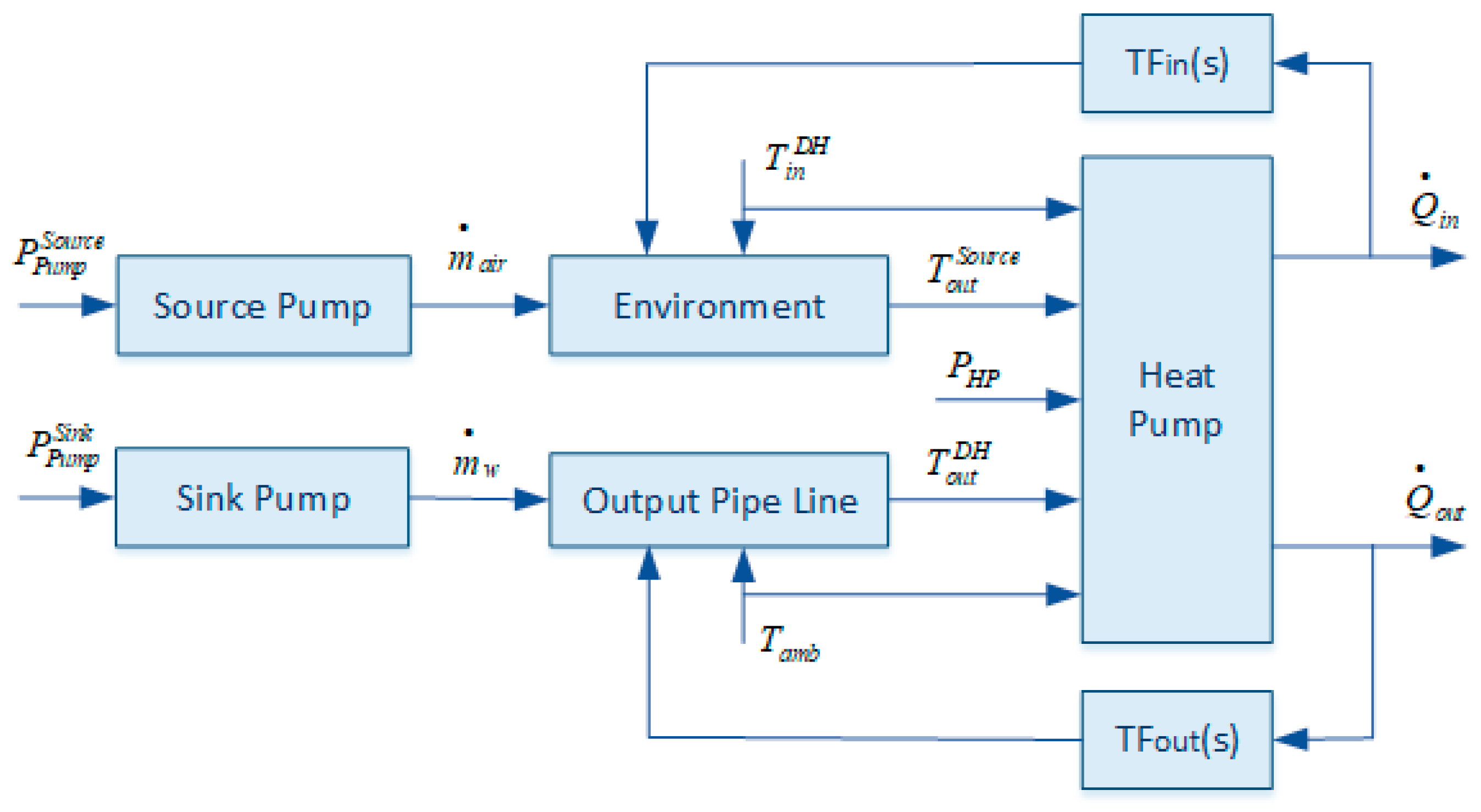


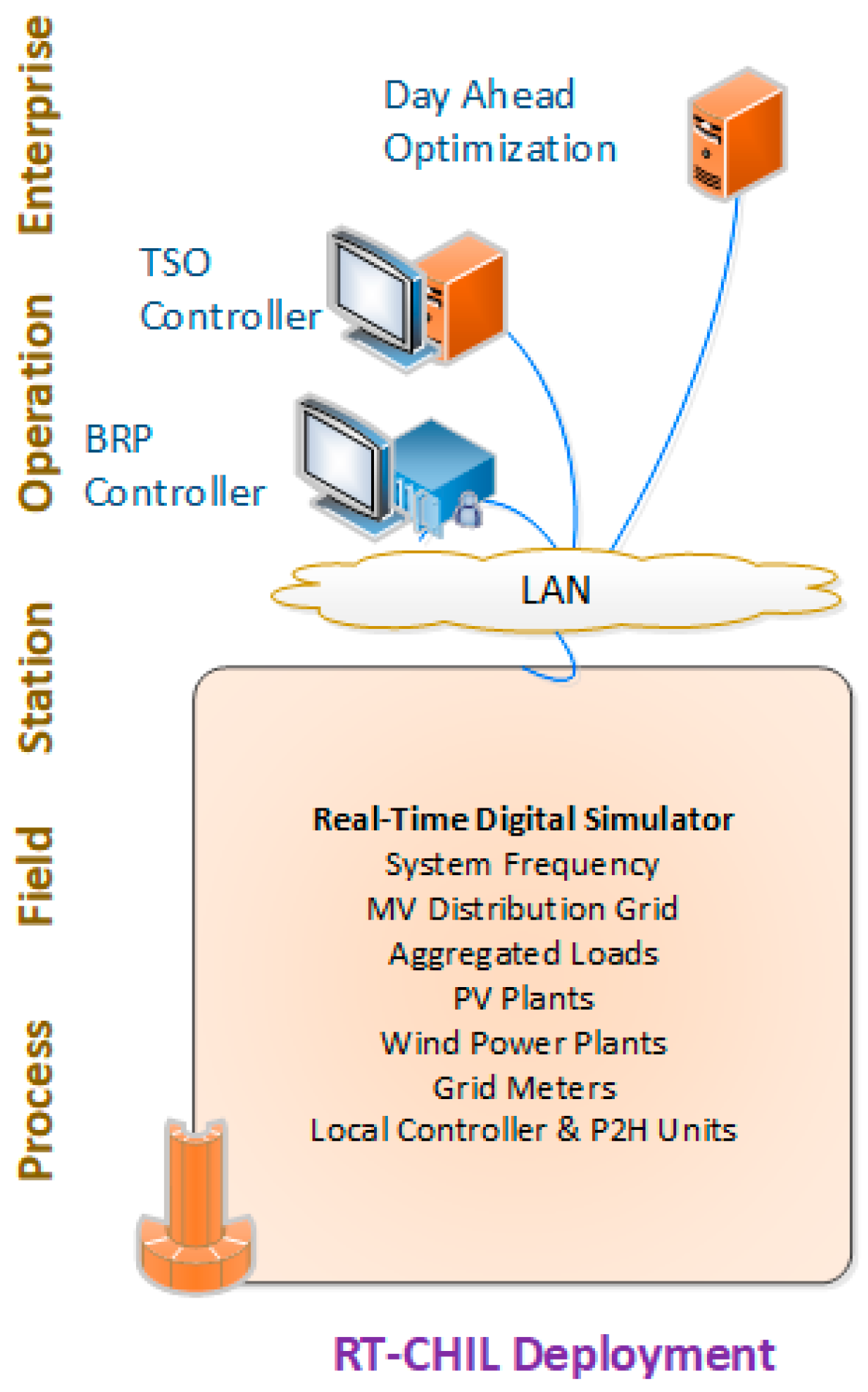
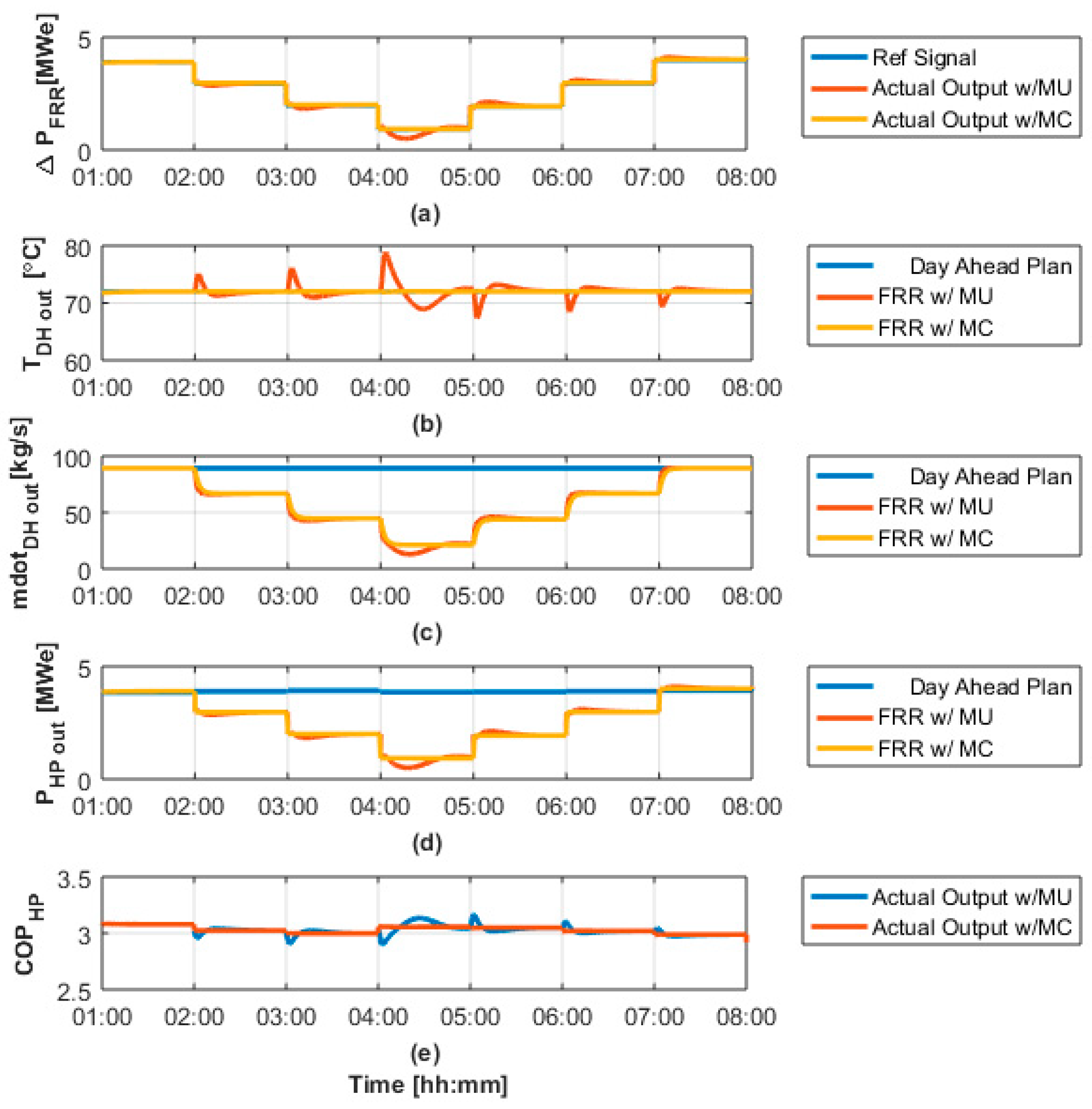

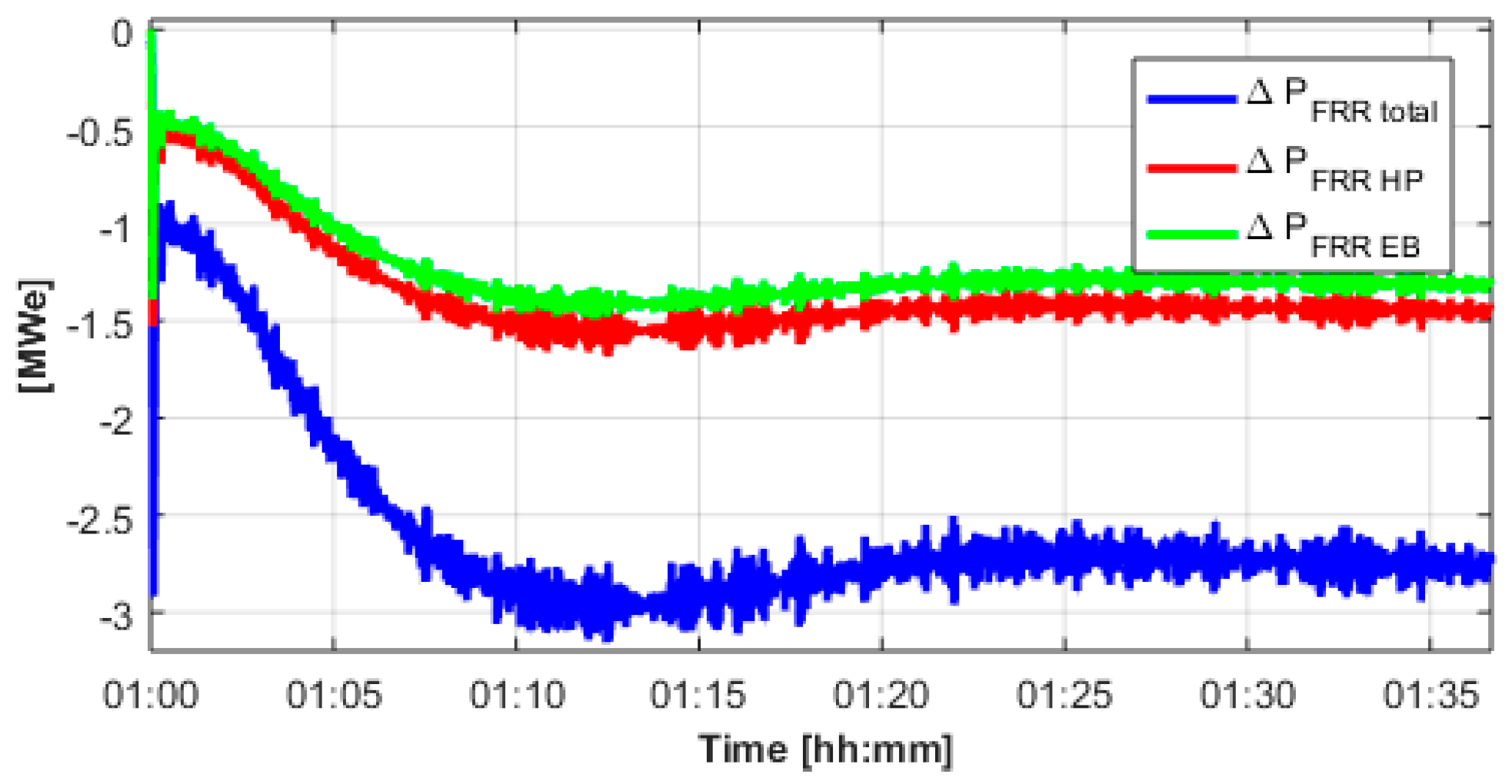


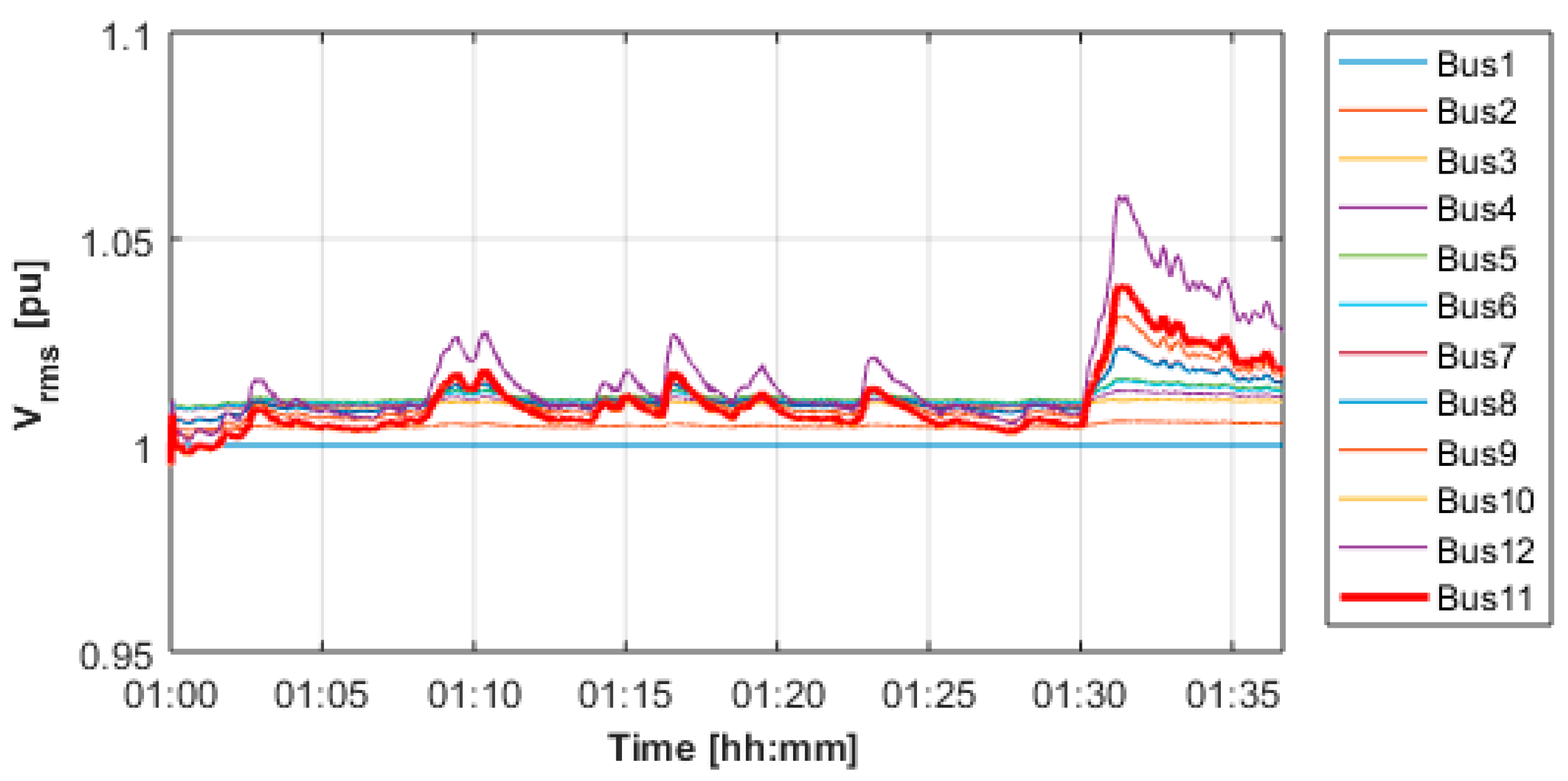
| FCR | aFRR | mFRR | |
|---|---|---|---|
| Operational day | [00:00–24:00] | [00:00–24:00] | [00:00–24:00] |
| Bid submission | 15:00 | 9:30 | 9:30 |
| Bids | 4 h blocks [MW] & [DKK/MW/h] | Hourly [MW] & [DKK/MW] | Hourly [MW] & [DKK/MW] |
| Minimum Bid | 0.3 MW | 1 MW | 5 MW |
| Maximum Bid | no | 50 MW | 50 MW |
| Up/Down Regulation | Separate Asymmetrical bids | Symmetrical bid | Separate Asymmetrical bids |
| Local Controller | yes | no | no |
| TSO Connectivity | Not required | SCADA | SCADA |
| TSO Signal Exchange Rate | n/a | 4–10 s | 4–10 s |
| Signal List | Not required | Extended list | Reduced list |
| Estimation of reserve | Not required | yes | no |
| Measurement Accuracy | <10 mHz. | <10 mHz. | <10 mHz. |
| Dead-Band | 20 mHz | - | - |
| Response | First 50% in 15 s Rest in max 30 s | 85% full activation in max 15 min | 85% full activation in max 15 min n/a |
| Response delay | n/a | max 135 s | max 135 s |
| Duration | At least 15 min | 1 h | 1 h |
© 2020 by the authors. Licensee MDPI, Basel, Switzerland. This article is an open access article distributed under the terms and conditions of the Creative Commons Attribution (CC BY) license (http://creativecommons.org/licenses/by/4.0/).
Share and Cite
Iov, F.; Khatibi, M.; Bendtsen, J.D. On the Participation of Power-To-Heat Assets in Frequency Regulation Markets—A Danish Case Study. Energies 2020, 13, 4608. https://doi.org/10.3390/en13184608
Iov F, Khatibi M, Bendtsen JD. On the Participation of Power-To-Heat Assets in Frequency Regulation Markets—A Danish Case Study. Energies. 2020; 13(18):4608. https://doi.org/10.3390/en13184608
Chicago/Turabian StyleIov, Florin, Mahmood Khatibi, and Jan Dimon Bendtsen. 2020. "On the Participation of Power-To-Heat Assets in Frequency Regulation Markets—A Danish Case Study" Energies 13, no. 18: 4608. https://doi.org/10.3390/en13184608








